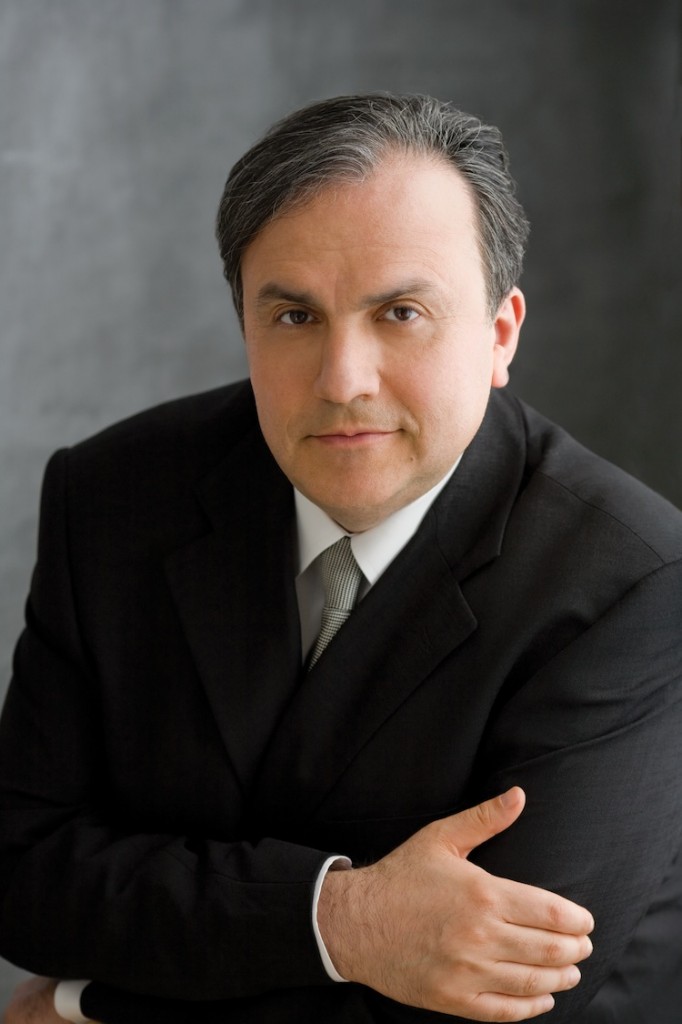Bronfman’s bravura provides fervent advocacy in Lindberg concerto

Yefim Bronfman performed Magnus Lindberg’s Piano Concerto No. 2 Thursday night with the New York Philharmonic. Photo: Dario Acosta
Following its inclusion in the orchestra’s 2012 West Coast tour, Yefim Bronfman, Alan Gilbert and the New York Philharmonic brought Magnus Lindberg’s Piano Concerto No. 2 back to Avery Fisher Hall.
Thursday’s fortuitously scheduled reprise came a mere three weeks after their live recording of the work was nominated for a pair of Grammy awards, and a month before Bronfman takes the concerto to Amsterdam for performances with the Royal Concertebouw Orchestra, the ensemble that co-commissioned the work, along with the Philharmonic.
Even for a such a highly esteemed composer of orchestral music, this schedule reflects enviable traction. A pianist of note himself, it was sensible that Lindberg would return to the piano concerto idiom after a 20-year gap.
Lindberg and other prominent Finns of his generation, including Saariaho and Salonen, have largely eschewed overt nationalism in their embrace of the post-war avant-grade, supplemented more recently in Lindberg’s case by such diverse influences as the French spectral school and the Berlin punk rock scene.
In this work the composer has noted the kinship with the second concertos of Ravel and Bartok, but dabs of Holst, Berg and Rachmaninoff peek out from the orchestral fabric on occasion; even a snippet of Tchaikovsky’s first piano concerto can be heard in the lower strings in the final movement.
From a broader perspective, Prokofiev, with his hybridization of modernism and Romantic hyper-virtuosity, may provide the closest model. Lindberg is to be admired for dipping into so many aesthetic pools, while still retaining a personal and viable idiom of his own.
At center stage Bronfman tore through page after page of the most fiendishly arduous, knuckle-busting passagework in every register of the keyboard. His accuracy is a marvel, though a thorough assessment was difficult given balance issues caused by some overzealous orchestration and acoustical quirks of the hall.
Much of the commentary about the concerto has identified the extreme difficulty of the piano writing as a central concern of the work. But virtuosity is not measured solely by the number of notes per second. At least as important are skills of a more subtle nature: delicacy, transparency, lyricism, voicing, etc. Yet few of these attributes are tested, and over time the nearly endless keyboard barrage became numbing.
But the composer himself has called the orchestra “my favorite instrument,” and in the void left by the pianist’s athletic preoccupations, the ensemble provides the bulk of the interest, announcing most of the twists and turns in color, texture, and dissonance. Most of the references to the past emerge from the orchestral fabric, and nearly every reference to traditionally tonality is relayed through orchestral subsets, most notably the brass and string sections. This division of labor is a compelling concept, but if you expect your pianist to be part poet, you may find the unrelieved adrenaline rush a bit relentless.
The concert opened with Christopher Rouse’s Rapture from 2000, a piece the composer describes as an attempt to invoke “spiritual bliss, religious or otherwise.” This state of mind is achieved in part by shunning sustained or unrelieved dissonance, and adhering to traditional tonal norms more persistently than perhaps any of Rouse’s other works. This engaging work rarely seems derivative or clichéd, and his skills in manipulating the orchestral palette through a 13-minute series of blooming gestures keeps the ear fully engaged.
Rouse’s recent appointment as the Philharmonic’s composer-in-residence is off to a good start, and New Yorkers shouldn’t miss the premiere of his Symphony No. 4 at Avery Fisher in June.
The concert concluded with a bustling, high-octane performance of Tchaikovsky’s Symphony No. 5. There have been more transcendent readings of this warhorse, and Gilbert’s relentlessly restless spirit led to uninspired final measures in both the first and second movements.
But compensating attributes were abundant, from the vigorous sweep and structural integrity of the opening movement to the hushed urgency and propulsive drive of the Scherzo. Stephen Williamson provided warm, burnished clarinet solos in the opening measures, and Gilbert received sustained warm and richly deserved applause from both audience and orchestra.
The program will be repeated 8 p.m. Friday and 7:30 p.m. Tuesday at Avery Fisher Hall. nyphil.org